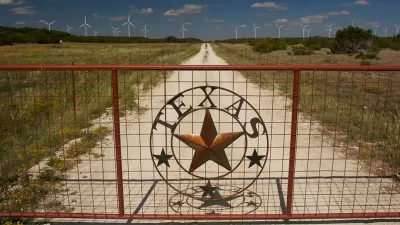Once again, rather than increasing the state's 20-cent gas tax (29 percent below the national average of 28-cents), policy makers seek to divert revenue to the state's ailing highway fund at the expense of the state's general fund.
"The Senate Transportation Committee on Wednesday (Feb. 25) voted 8-1 in favor of two related measures that would infuse the highway fund with part of the state’s car sales tax revenue," writes Tom Benning of The Dallas Morning News. The two measures would raise more than $2 billion.
Under [Senate Transportation Committee Chairman Robert Nichols'] plan, the vehicle sales tax revenue that goes to the state’s general fund would be capped, starting in 2018, at $2.5 billion a year. The next $2.5 billion a year above that would go to the transportation department. [After $5 billion if reached, the revenue is split between the highway and general funds.]
The Texas Department of Transportation (TxDOT) suffers from a $5 billion annual budget shortfall, which led the legislature to place Proposition 1 on the November 4, 2014 ballot, the state's first transportation diversion measure (at least noted here). It diverted a portion of energy taxes from the Rainy Day Fund to the highway fund. Energy taxes have decreased with the greatly reduced market price of oil.
As Daniel C. Vock, transportation reporter for Governing, wrote after the proposition's overwhelming passage, "supporters hope that kind of lopsided [80 percent] victory will persuade Greg Abbott, Texas’ new governor-elect, and the state legislature to find even more money for transportation in the legislative session early next year." The key word there is "find," as opposed to raise.
Because the motor vehicle sales tax diversion would amend the state constitution, it would have to be approved by the voters. Concerns have already being expressed in the legislature.
Sen. Rodney Ellis, D-Houston, wondered how such a large investment – combined with top lawmakers’ proposed tax relief – would leave room to improve education. A couple senators questioned if the legislation would do enough to wean the state from toll roads....Past efforts to move the car sales tax revenue to transportation drew opposition from budget writers who worried about blowing a hole in the general fund going forward.
At least one media outlet is calling for the state to actually do the unthinkable, apparently, and that is to raise the 20-cent state gas tax, last increased in 1991. "Actually, it hasn’t stayed the same," according to The San Antonio Express News editorial. "Adjusted for inflation, that 20 cents from 1991 is probably more like 10 or 12 cents today,"
This correspondent was most surprised to read in the editorial that a full 25 percent of the tax, i.e., a nickel, is used to fund education. Texas Future confirms that the split is written in the state constitution.
"The debate will now head to the full Senate, where Lt. Gov. Dan Patrick said he hoped to bring the measures up on the floor next week," adds Benning.
Correspondent's note: As Texas Future notes, "The term diversions is commonly used in highway finance to refer to appropriations from the Highway Fund for non-construction purposes," e.g., used for law enforcement on state highways, which Texas House Speaker Joe Straus is hopes to end, according to the Houston Chronicle. Planetizen applies a broader meaning to the term.
Hat Tip to AASHTO Daily Transportation Update.
FULL STORY: Senate panel OKs, despite some concerns, plan to boost TxDOT with car sales tax revenue

Study: Maui’s Plan to Convert Vacation Rentals to Long-Term Housing Could Cause Nearly $1 Billion Economic Loss
The plan would reduce visitor accommodation by 25,% resulting in 1,900 jobs lost.

North Texas Transit Leaders Tout Benefits of TOD for Growing Region
At a summit focused on transit-oriented development, policymakers discussed how North Texas’ expanded light rail system can serve as a tool for economic growth.

Why Should We Subsidize Public Transportation?
Many public transit agencies face financial stress due to rising costs, declining fare revenue, and declining subsidies. Transit advocates must provide a strong business case for increasing public transit funding.

How to Make US Trains Faster
Changes to boarding platforms and a switch to electric trains could improve U.S. passenger rail service without the added cost of high-speed rail.

Columbia’s Revitalized ‘Loop’ Is a Hub for Local Entrepreneurs
A focus on small businesses is helping a commercial corridor in Columbia, Missouri thrive.

Invasive Insect Threatens Minnesota’s Ash Forests
The Emerald Ash Borer is a rapidly spreading invasive pest threatening Minnesota’s ash trees, and homeowners are encouraged to plant diverse replacement species, avoid moving ash firewood, and monitor for signs of infestation.
Urban Design for Planners 1: Software Tools
This six-course series explores essential urban design concepts using open source software and equips planners with the tools they need to participate fully in the urban design process.
Planning for Universal Design
Learn the tools for implementing Universal Design in planning regulations.
City of Santa Clarita
Ascent Environmental
Institute for Housing and Urban Development Studies (IHS)
City of Grandview
Harvard GSD Executive Education
Toledo-Lucas County Plan Commissions
Salt Lake City
NYU Wagner Graduate School of Public Service



























